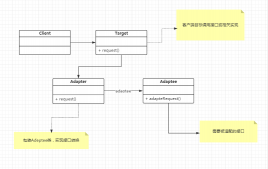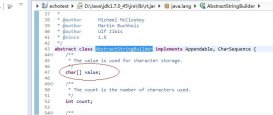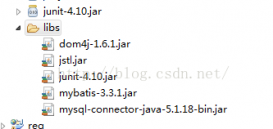一、简介
线程池类为 java.util.concurrent.threadpoolexecutor,常用构造方法为:
|
1
2
3
4
|
threadpoolexecutor(int corepoolsize, int maximumpoolsize, long keepalivetime, timeunit unit, blockingqueue workqueue, rejectedexecutionhandler handler) |
- corepoolsize: 线程池维护线程的最少数量
- maximumpoolsize:线程池维护线程的最大数量
- keepalivetime: 线程池维护线程所允许的空闲时间
- unit: 线程池维护线程所允许的空闲时间的单位
- workqueue: 线程池所使用的缓冲队列
- handler: 线程池对拒绝任务的处理策略
一个任务通过 execute(runnable)方法被添加到线程池,任务就是一个 runnable类型的对象,任务的执行方法就是 runnable类型对象的run()方法。
当一个任务通过execute(runnable)方法欲添加到线程池时:
- 如果此时线程池中的数量小于corepoolsize,即使线程池中的线程都处于空闲状态,也要创建新的线程来处理被添加的任务。
- 如果此时线程池中的数量等于 corepoolsize,但是缓冲队列 workqueue未满,那么任务被放入缓冲队列。
- 如果此时线程池中的数量大于corepoolsize,缓冲队列workqueue满,并且线程池中的数量小于maximumpoolsize,建新的线程来处理被添加的任务。
- 如果此时线程池中的数量大于corepoolsize,缓冲队列workqueue满,并且线程池中的数量等于maximumpoolsize,那么通过 handler所指定的策略来处理此任务。
也就是:处理任务的优先级为:
核心线程corepoolsize、任务队列workqueue、最大线程maximumpoolsize,如果三者都满了,使用handler处理被拒绝的任务。
当线程池中的线程数量大于 corepoolsize时,如果某线程空闲时间超过keepalivetime,线程将被终止。这样,线程池可以动态的调整池中的线程数。
unit可选的参数为java.util.concurrent.timeunit中的几个静态属性:
nanoseconds、microseconds、milliseconds、seconds。
workqueue我常用的是:java.util.concurrent.arrayblockingqueue
handler有四个选择:
- threadpoolexecutor.abortpolicy() 抛出java.util.concurrent.rejectedexecutionexception异常
- threadpoolexecutor.callerrunspolicy() 重试添加当前的任务,他会自动重复调用execute()方法
- threadpoolexecutor.discardoldestpolicy() 抛弃旧的任务
- threadpoolexecutor.discardpolicy() 抛弃当前的任务
二、一般用法举例
|
1
2
3
4
5
6
7
8
9
10
11
12
13
14
15
16
17
18
19
20
21
22
23
24
25
26
27
28
29
30
31
32
33
34
35
36
37
38
39
40
41
42
43
44
45
46
47
48
49
50
51
52
53
54
55
56
57
58
59
60
61
62
63
64
65
66
|
package demo;import java.io.serializable;import java.util.concurrent.arrayblockingqueue;import java.util.concurrent.threadpoolexecutor;import java.util.concurrent.timeunit;public class testthreadpool2{ private static int producetasksleeptime = 2; private static int producetaskmaxnumber = 10; public static void main(string[] args) { // 构造一个线程池 threadpoolexecutor threadpool = new threadpoolexecutor(2, 4, 3, timeunit.seconds, new arrayblockingqueue<runnable>(3), new threadpoolexecutor.discardoldestpolicy()); for (int i = 1; i <= producetaskmaxnumber; i++) { try { // 产生一个任务,并将其加入到线程池 string task = "task@ " + i; system.out.println("put " + task); threadpool.execute(new threadpooltask(task)); // 便于观察,等待一段时间 thread.sleep(producetasksleeptime); } catch (exception e) { e.printstacktrace(); } } }}/** * 线程池执行的任务 */class threadpooltask implements runnable, serializable{ private static final long serialversionuid = 0; private static int consumetasksleeptime = 2000; // 保存任务所需要的数据 private object threadpooltaskdata; threadpooltask(object tasks) { this.threadpooltaskdata = tasks; } public void run() { // 处理一个任务,这里的处理方式太简单了,仅仅是一个打印语句 system.out.println(thread.currentthread().getname()); system.out.println("start .." + threadpooltaskdata); try { // //便于观察,等待一段时间 thread.sleep(consumetasksleeptime); } catch (exception e) { e.printstacktrace(); } threadpooltaskdata = null; } public object gettask() { return this.threadpooltaskdata; }} |
说明:
1、在这段程序中,一个任务就是一个runnable类型的对象,也就是一个threadpooltask类型的对象。
2、一般来说任务除了处理方式外,还需要处理的数据,处理的数据通过构造方法传给任务。
3、在这段程序中,main()方法相当于一个残忍的领导,他派发出许多任务,丢给一个叫 threadpool的任劳任怨的小组来做。
这个小组里面队员至少有两个,如果他们两个忙不过来,任务就被放到任务列表里面。
如果积压的任务过多,多到任务列表都装不下(超过3个)的时候,就雇佣新的队员来帮忙。但是基于成本的考虑,不能雇佣太多的队员,至多只能雇佣 4个。
如果四个队员都在忙时,再有新的任务,这个小组就处理不了了,任务就会被通过一种策略来处理,我们的处理方式是不停的派发,直到接受这个任务为止(更残忍!呵呵)。
因为队员工作是需要成本的,如果工作很闲,闲到 3seconds都没有新的任务了,那么有的队员就会被解雇了,但是,为了小组的正常运转,即使工作再闲,小组的队员也不能少于两个。
4、通过调整 producetasksleeptime和 consumetasksleeptime的大小来实现对派发任务和处理任务的速度的控制,改变这两个值就可以观察不同速率下程序的工作情况。
5、通过调整4中所指的数据,再加上调整任务丢弃策略,换上其他三种策略,就可以看出不同策略下的不同处理方式。
6、对于其他的使用方法,参看jdk的帮助,很容易理解和使用。
另一个例子:
|
1
2
3
4
5
6
7
8
9
10
11
12
13
14
15
16
17
18
19
20
21
22
23
24
25
26
27
28
29
30
31
32
33
34
35
36
37
38
39
40
41
42
43
44
45
46
47
48
49
50
51
52
53
54
55
56
57
58
59
60
61
62
63
64
65
66
67
68
69
70
71
72
73
74
75
76
|
package demo;import java.util.queue;import java.util.concurrent.arrayblockingqueue;import java.util.concurrent.threadpoolexecutor;import java.util.concurrent.timeunit;public class threadpoolexecutortest{ private static int queuedeep = 4; public void createthreadpool() { /* * 创建线程池,最小线程数为2,最大线程数为4,线程池维护线程的空闲时间为3秒, * 使用队列深度为4的有界队列,如果执行程序尚未关闭,则位于工作队列头部的任务将被删除, * 然后重试执行程序(如果再次失败,则重复此过程),里面已经根据队列深度对任务加载进行了控制。 */ threadpoolexecutor tpe = new threadpoolexecutor(2, 4, 3, timeunit.seconds, new arrayblockingqueue<runnable>(queuedeep), new threadpoolexecutor.discardoldestpolicy()); // 向线程池中添加 10 个任务 for (int i = 0; i < 10; i++) { try { thread.sleep(1); } catch (interruptedexception e) { e.printstacktrace(); } while (getqueuesize(tpe.getqueue()) >= queuedeep) { system.out.println("队列已满,等3秒再添加任务"); try { thread.sleep(3000); } catch (interruptedexception e) { e.printstacktrace(); } } taskthreadpool ttp = new taskthreadpool(i); system.out.println("put i:" + i); tpe.execute(ttp); } tpe.shutdown(); } private synchronized int getqueuesize(queue queue) { return queue.size(); } public static void main(string[] args) { threadpoolexecutortest test = new threadpoolexecutortest(); test.createthreadpool(); } class taskthreadpool implements runnable { private int index; public taskthreadpool(int index) { this.index = index; } public void run() { system.out.println(thread.currentthread() + " index:" + index); try { thread.sleep(3000); } catch (interruptedexception e) { e.printstacktrace(); } } }} |
总结
以上就是这篇文章的全部内容了,希望本文的内容对大家的学习或者工作具有一定的参考学习价值,谢谢大家对服务器之家的支持。如果你想了解更多相关内容请查看下面相关链接
原文链接:https://blog.csdn.net/qq_26562641/article/details/55189875

















